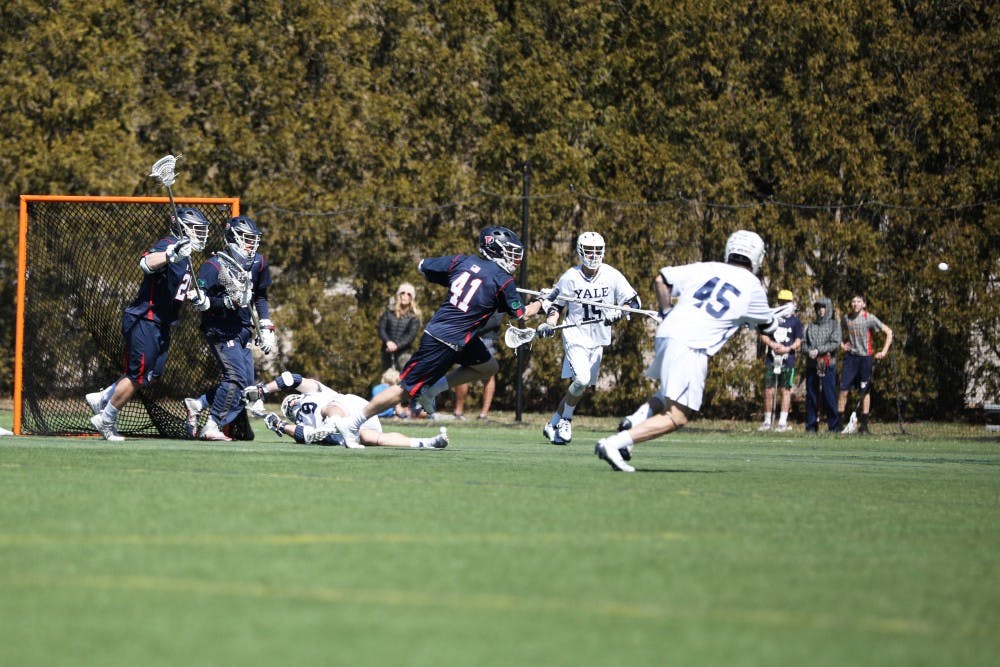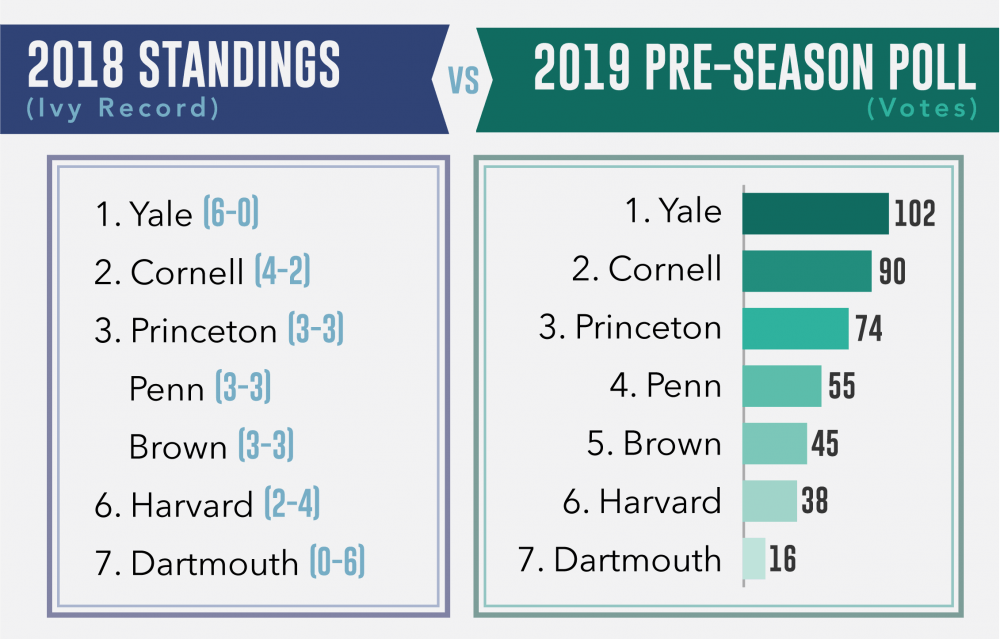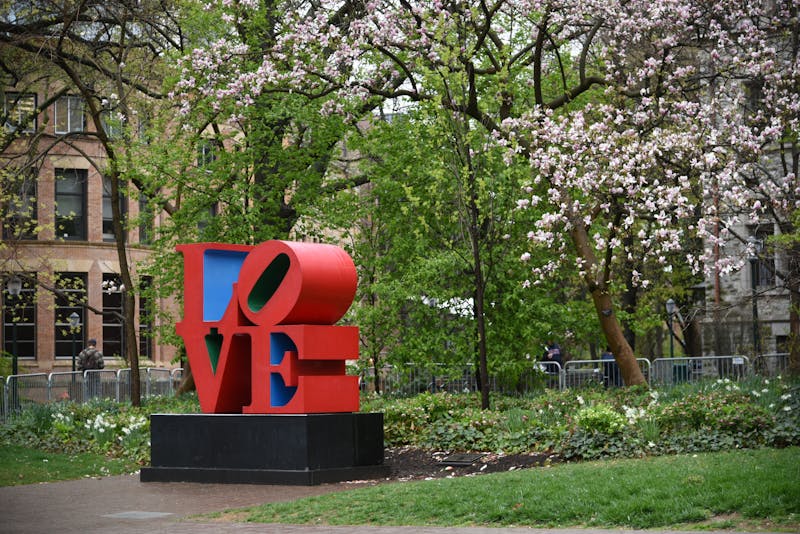
Men's lacrosse opens its season at Franklin Field this Saturday against No. 3 Maryland, and while the Quakers' first Ivy competition isn't until March 16, it's never too early to look at the landscape of the conference. Here's how the Ivy League looks as the season begins:
No. 1 — Yale
The reigning national champions are, unsurprisingly, still the team to beat in the Ivy League, a fact only reinforced by their preseason No. 1 national ranking. The Bulldogs don’t simply rebuild — they reload. The void left on the offense by outgoing Tewaaraton Award winner Ben Reeves should be adequately filled with returners such as junior standout Jackson Morrill and senior midfielder Jack Tigh. On defense, Yale is in equally good hands. Sophomore Chris Fake returns after a rookie season that cemented him as one of the best covermen in the country. Last but not least, All-American face-off man and preseason Tewaaraton favorite TD Ierlan recently transferred over from Albany, proving that the rich do indeed get richer.
No. 2 — Cornell
Headlined by returning first-team All-American junior Jeff Teat, the Big Red are once again set to have a dynamic offense capable of leading the country in goals per game. Teat is joined on that offense by capable upperclassmen in senior Clarke Petterson and junior Connor Fletcher, both of whom set the tone of an attack predicated almost exclusively on ball movement and constant motion. However, toward the end of last season, defenses devised a strategy to disrupt that offense by face-guarding Teat, slowing Cornell’s pace significantly. Especially in the shot clock era, this lock-off strategy could give Cornell fits, perhaps making the Big Red more vulnerable than their roster would indicate.

No. 3 — Penn
Nonconference matchups with Final Four candidates Maryland, Duke, and Penn State should more than prepare the Quakers for the rigors of conference play, despite the Ivy League fielding many of the nation’s top teams. In order to compete against the star power of Yale, Cornell, and Princeton, Penn will have to lean on its experience. With returning seniors Simon Mathias and Tyler Dunn heading the offense, new offensive assistant coach Mike Abbott should have plenty to work with. That being said, the strength of this team could be its defense. Junior Mark Evanchick established himself last year as one of the best defensemen in the conference, earning first-team All-Ivy recognition. He’ll be flanked by junior Kyle Thornton and senior Reed Junkin in the cage. Junkin, in particular, is poised to have a big season in his fourth year as a starter. To top it all off, the Quakers welcome freshman long stick midfielder BJ Farrare, an Under Armour All-American and the 24th-ranked freshman in the country according to Inside Lacrosse. With his speed and stick skills, the Red and Blue could have a weapon in the middle of the field.
No. 4 — Princeton
For the Tigers, everything starts and ends with Michael Sowers. The junior attackman is undoubtedly the team’s centerpiece on offense, and his average of 6.4 points per game last season led the entire country. Equally dangerous as both a scorer and a feeder, Sowers will have ample finishers surrounding him with junior Phillip Robertson and versatile sophomore Chris Brown. However, with Princeton, offense is never in question. For the Tigers to establish themselves as a force in the Ivy League, they’ll need to prove their mettle on the defensive end. Fortunately for them, they bring back a ton of experience on that side of the ball. Sophomore George Baughan will look to build off of an impactful freshman season, and junior Arman Medghalchi is set to embark on his third season as a starter. If the Tigers can get solid goaltending and face-off play, they could catapult up the Ivy League.
No. 5 — Brown
Looking to bounce back from a disappointing 6-9 season in 2018, second-year coach Mike Daly brings back an experienced group of offensive players, led by junior Luke McCaleb. After bursting onto the scene with an outstanding freshman year, McCaleb proved that his scoring was no fluke with 45 points last season. In almost any other conference, he’d be a shoo-in for preseason all-league consideration, but with star attackmen throughout the Ivy League, he flies dangerously under the radar. Perhaps Brown’s greatest strength, especially compared to its Ivy peers, is its goalie play. Junior Phil Goss was second in the country last year in saves per game, and his save percentage should only increase this season as he becomes more comfortable as a starter. If this team can get stops and utilize its patented fast-pace approach, then perhaps the Bears can make some noise in a crowded Ivy League.
No. 6 — Harvard
With three of their top four scorers from 2018 graduated, the Crimson will have their work cut out for them on the offensive end. Junior Kyle Anderson is their only returner with significant point totals from last season. In the cage, Harvard will be inexperienced, as probable starter Kyle Mullin recorded just one save in very limited action last season. Perhaps the team’s two incoming Under Armour All-American freshmen — Isaiah Dawson and Nick Loring — can carry the rest of the load. If not, it could be a rebuilding year for coach Chris Wojcik.
No. 7 — Dartmouth
With Harvard looking relatively vulnerable, this season could be Dartmouth’s best chance to remove itself from the Ivy League cellar. Close losses to the Quakers and the Crimson last season hint at better things to come for the Big Green in 2019. Expect attackmen George Prince and Ben Martin to lead a solid offense. If Dartmouth can figure it out on defense, the rest of the conference could be on upset alert.
The Daily Pennsylvanian is an independent, student-run newspaper. Please consider making a donation to support the coverage that shapes the University. Your generosity ensures a future of strong journalism at Penn.
Donate







